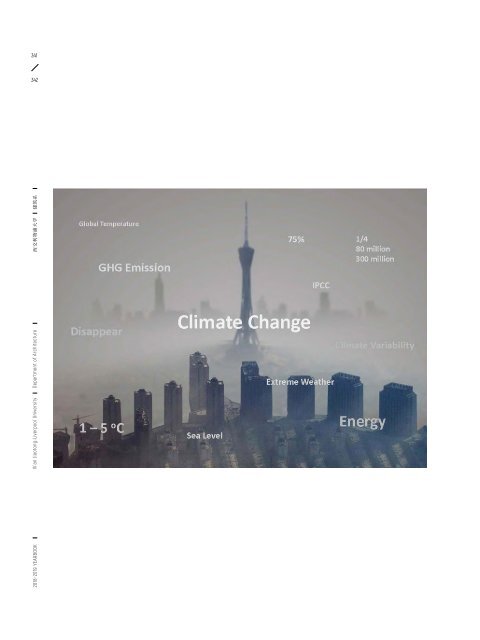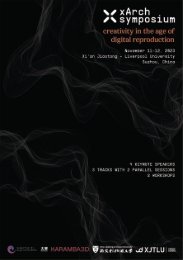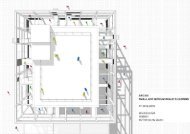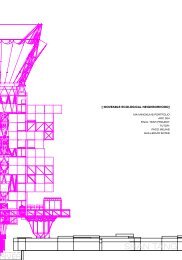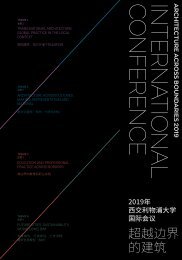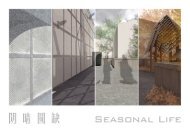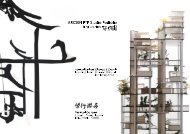YEARBOOK 2018 - 2019 | XJTLU DEPARTMENT OF ARCHITECTURE
The sixth edition of the yearbook of the Department of Architecture at Xi'an Jiaotong-Liverpool University presents student works created during the academic year 2018 - 2019. The yearbook exemplifies the new model for Chinese architectural education for which the department was commended by the Royal Institute of British Architects (RIBA). It is also a showcase of the creative culture that has guided our students towards successful international careers as responsible and creative architectural designers. The Department of Architecture at XJTLU offers RIBA Part 1, 2 and 3.
The sixth edition of the yearbook of the Department of Architecture at Xi'an Jiaotong-Liverpool University presents student works created during the academic year 2018 - 2019. The yearbook exemplifies the new model for Chinese architectural education for which the department was commended by the Royal Institute of British Architects (RIBA). It is also a showcase of the creative culture that has guided our students towards successful international careers as responsible and creative architectural designers. The Department of Architecture at XJTLU offers RIBA Part 1, 2 and 3.
Create successful ePaper yourself
Turn your PDF publications into a flip-book with our unique Google optimized e-Paper software.
341<br />
342<br />
THE ENERGY RETR<strong>OF</strong>IT <strong>OF</strong><br />
THE EXISTING RESIDEN-<br />
TIAL BUILDING STOCK IN<br />
JIANGSU PROVINCE<br />
<strong>2018</strong>-<strong>2019</strong> <strong>YEARBOOK</strong> Xi’an Jiaotong-Liverpool University Department of Architecture 西 交 利 物 浦 大 学 建 筑 系<br />
Xi Chen<br />
PhD Candidate<br />
Department of Architecture<br />
Xi’an Jiaotong-Liverpool University<br />
The operational energy use in buildings in China represents over 1/5<br />
of the total national energy consumption, from which urban residential<br />
buildings takes over 23% in building sector (space heating in north<br />
China does not included). It is predicted that the energy consumption<br />
and carbon emission for housing sector will increase sharply in the<br />
near future. As one of the biggest energy consuming country, China<br />
has committed to established policies to promote clean and renewable<br />
energy and energy efficiency buildings, to decrease carbon emission by<br />
60% to 65% by 2030.<br />
The low-energy retrofit of the existing housing stock can significantly<br />
reduce energy consumption and carbon emissions. The study focuses on<br />
the main existing residential apartment building typologies constructed<br />
between 1979 to 1999 in Jiangsu Province both at both building and the<br />
stock level. Thus, this research is expected to investigate the applicability<br />
and the potential of innovative measures, policies and approaches to<br />
low energy retrofit for the residential building stock in Jiangsu Province<br />
that fit different future social and climate context scenarios through<br />
an innovative energy model that is able to perform different analysis<br />
with particular regard to sustainability, adaptation and resilience of the<br />
housing stock retrofit.<br />
Research


